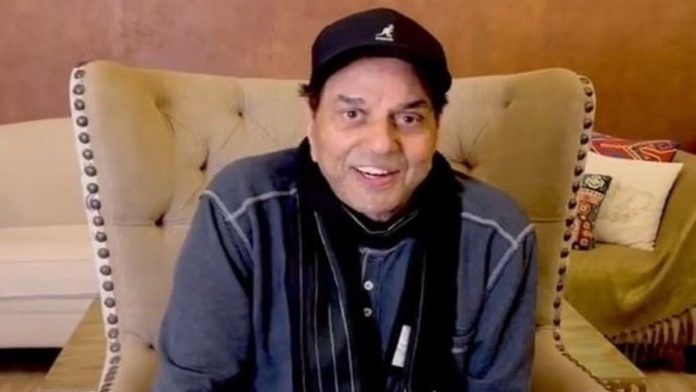Veteran actor Dharmendra died in his Mumbai apartment. He was recently discharged from the Breach Candy Hospital after complaining of breathlessness. The actor, known as India’s He-Man, leaves behind a huge stamp on Hindi cinema and a string of memorable performances that entertained his fans for over six decades.
Here is a look at some of his most memorable roles:
Baharen Phir bhi Aayengi (1966)
Guru Dutt passed away in 1964 while shooting Baharen Phir bhi Aayengi, and Dharmendra replaced him as the upright, firebrand journalist Jiten. It was a role all other top stars of the time, Dev Anand, Sunil Dutt, to Joy Mukerji, had declined.
The film explored the state of journalism in India and also placed its hero in a love triangle with two sisters. When Dharmendra sits at the piano, singing ‘Aapke Haseen Rukh Pe’ while looking at both sisters, it’s obvious why Amita (Mala Sinha) and Sunita (Tanuja Chandra) fell for the dashing journalist.
Anupama (1969)
In this story of a troubled father and his daughter, Dharmendra played a writer and poet, Ashok. The father, Mohan (Tarun Bose), holds Uma (Sharmila Tagore) responsible for his wife’s death. Dharmendra, who enters Uma’s life like a breath of fresh air, has given up being a professor to be a school teacher. He is handsome, empathetic to her plight. He wins over not just Uma’s heart, but also his audience with his impeccable performance.
Dharmendra’s character helps Uma find her own voice and confront her father. In many ways, Ashok broke the hero frame of his era by not becoming the saviour.
Also read: The day Dharmendra ‘died’
Satyakam (1969)
Anguish writ large on his face, Satyapriya (Dharmendra) says, “Mera dimaag kharaab ho gaya hai, ya main cynic ho gaya hoon, ya duniya badal gayee hain (I’ve lost my mind. Or, maybe, I have become a cynic. Or, maybe, the world has changed).” The line captures Satyapriya’s disillusionment with the world and contrasts sharply with his schoolmate Narendra’s (Sanjeev Kumar) worldly wisdom.
Dharmendra’s character in Hrishikesh Mukherjee’s film, based on the novel of the same name, is one of his most complex roles. The actor shines bright as the morally upright man struggling to survive in the real world. Dharmendra moves through hopeful idealism to anger and eventually disillusionment in a remarkably restrained performance. It remains one of his most underrated acts, which didn’t get its due at the box office. Mukherjee, however, knew how talented he was and called him his favourite actor. “By favourite actor, I didn’t mean just his acting talent. I meant the human being also. I cast Dharmendra as a professor in Chupke Chupke. He was also in Satyakam, the most satisfying film I’ve made,” he said in an interview.
Sholay (1975)
Sholay is remembered 50 years on for a variety of reasons, but a tied-up, tortured Dharmendra screaming, “Basanti, in kutto ke samne mat nachna!” (Basanti, don’t dance in front of these dogs) remains iconic. The scene where he climbs a water tanker to declare his love for Basanti is etched in the memory of cinema lovers. Dharmendra inhabits the fun-loving dacoit Veeru effortlessly, who sings ‘yeh dosti’ with Jai (Amitabh Bachchan), flirts with Basanti (Hema Malini) and fights Gabbar (Amjad Khan). Veeru is perhaps the only character in the mega hit with more than one shade.
Chupke Chupke (1975)
In Chupke Chupke, Dharmendra dropped his ‘tough guy’ mantle to explore comedy. Under Hrishikesh Mukherjee’s direction, he played the mischievous Professor Parimal Tripathi, who had a penchant for pranking people. His blend of intelligence and impeccable comic timing showed the audience how complete an actor he was. Despite sharing the screen with accomplished actors such as Om Prakash, Sharmila Tagore, and Amitabh Bachchan, Dharmendra made sure he stood tall with his performance.
(Edited by Ratan Priya)






